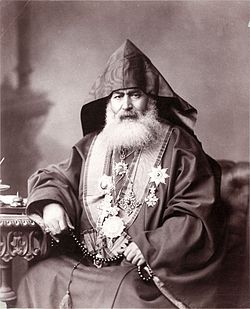This article needs additional citations for verification .(December 2023) |

In 638, the Armenian Apostolic Church began appointing its own bishop of Jerusalem. In the early 14th century these bishops came to be known as patriarchs. The office has continued, with some interruptions, to this day.
Contents
The bishop at the Armenian Patriarchate of Jerusalem is given the title of Patriarch in deference to Jerusalem's holy status within Christianity and has an independent jurisdiction from the Catholicos of All Armenians. The Patriarch's title is "His Beatitude".
